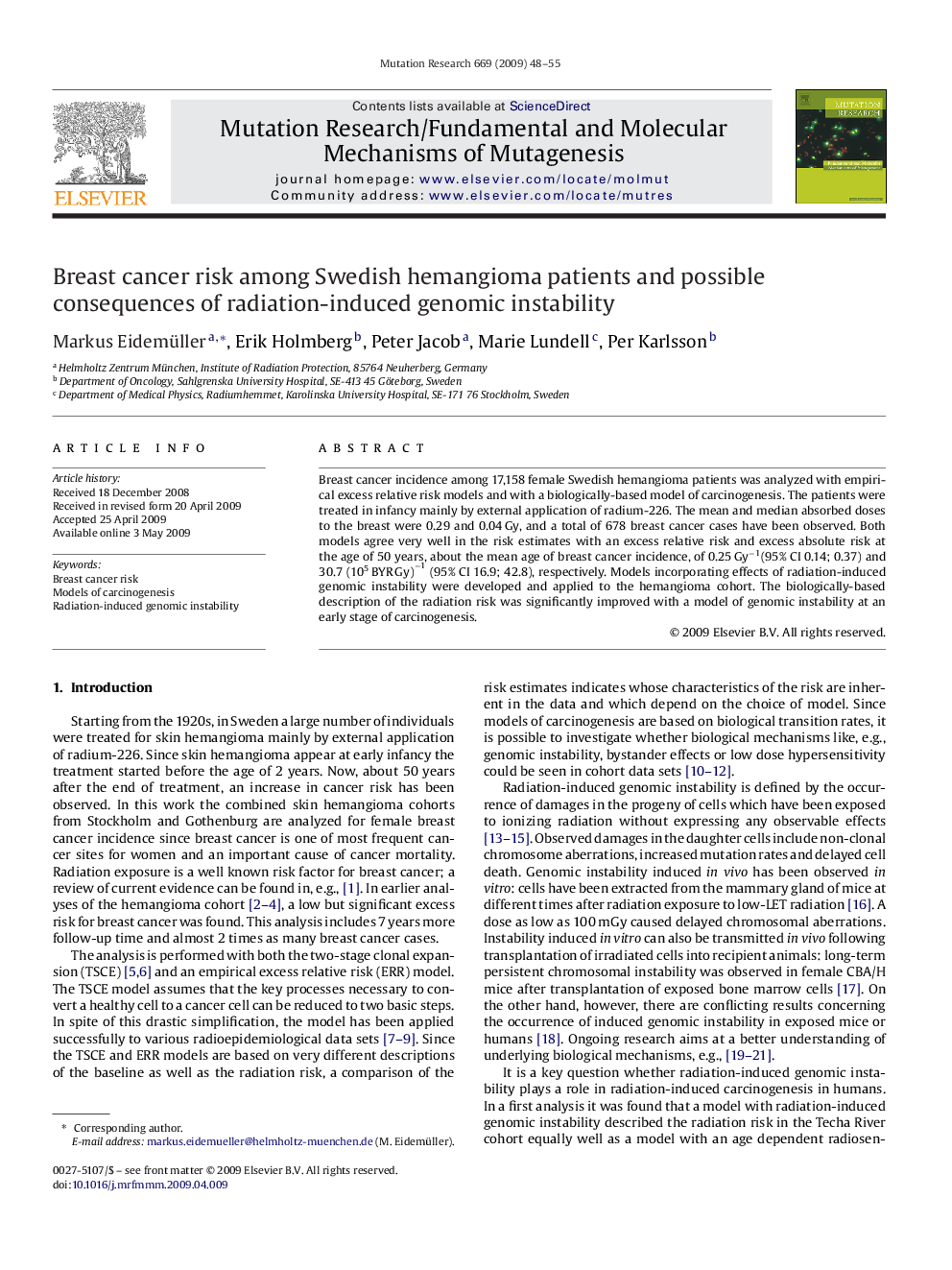| Article ID | Journal | Published Year | Pages | File Type |
|---|---|---|---|---|
| 2146952 | Mutation Research/Fundamental and Molecular Mechanisms of Mutagenesis | 2009 | 8 Pages |
Abstract
Breast cancer incidence among 17,158 female Swedish hemangioma patients was analyzed with empirical excess relative risk models and with a biologically-based model of carcinogenesis. The patients were treated in infancy mainly by external application of radium-226. The mean and median absorbed doses to the breast were 0.29 and 0.04Â Gy, and a total of 678 breast cancer cases have been observed. Both models agree very well in the risk estimates with an excess relative risk and excess absolute risk at the age of 50 years, about the mean age of breast cancer incidence, of 0.25Â Gyâ1(95% CI 0.14; 0.37) and 30.7 (105BYRGy)â1 (95% CI 16.9; 42.8), respectively. Models incorporating effects of radiation-induced genomic instability were developed and applied to the hemangioma cohort. The biologically-based description of the radiation risk was significantly improved with a model of genomic instability at an early stage of carcinogenesis.
Related Topics
Life Sciences
Biochemistry, Genetics and Molecular Biology
Cancer Research
Authors
Markus Eidemüller, Erik Holmberg, Peter Jacob, Marie Lundell, Per Karlsson,
